Top speed 515 km/h Wingspan 30 m First flight July 1965 | Length 24 m Engine type Turboprop | |
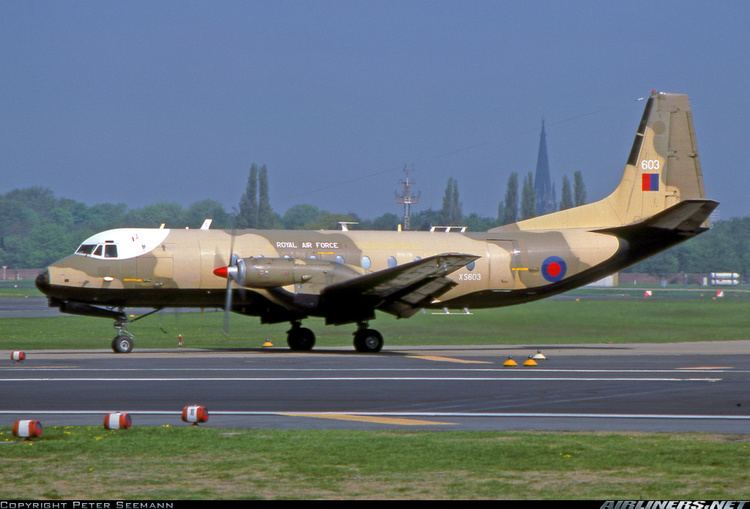 | ||
Hawker siddeley andover c1 raf waddington
The Hawker Siddeley HS 780 Andover is a twin-engined turboprop military transport aircraft produced by Hawker Siddeley for the Royal Air Force developed from the Avro-designed HS 748 airliner. The Andover was named after the Avro Andover, a Royal Air Force (RAF) biplane transport used for medical evacuation between the first and second world wars; and RAF Andover, where trials of the aircraft were partially carried out. The Andover had a kneeling landing gear to make ramp loading easier.
Contents
- Hawker siddeley andover c1 raf waddington
- Design and development
- Operational history
- Variants
- Military operators
- Civil operators
- Aircraft on display
- New Zealand
- United Kingdom
- Specifications Andover C1
- References
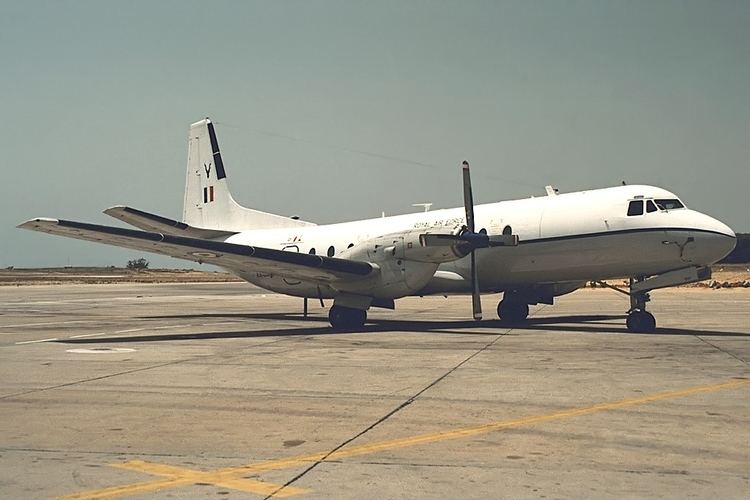
Design and development
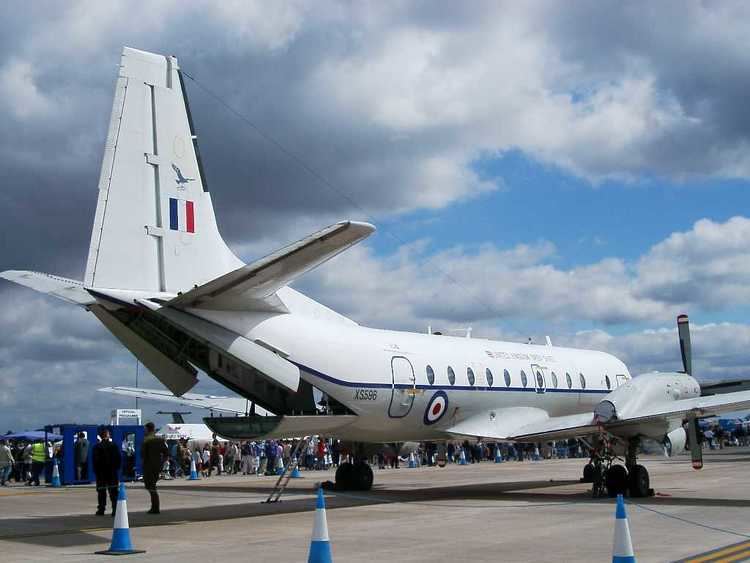
At the start of the 1960s the Royal Air Force issued a requirement for a medium tactical freighter and Avro started work on a military variant of the Dart-powered twin-engined Avro 748 airliner. Handley Page also proposed a variant of the Handley Page Herald to meet the same requirement and both types were tested by the Air Force in February 1962 at Martlesham Heath in Suffolk. A prototype Avro 748 Srs 2 was used for the trials.
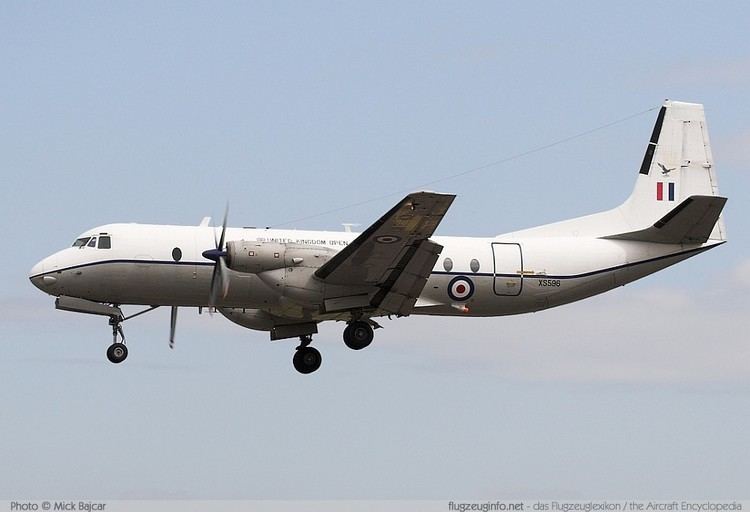
The RAF decided to order a military variant of the 748, designated by Avro as the Avro 780; and the original Avro 748 prototype was modified with an upswept rear fuselage and rear loading ramp as the Avro 748MF to test the military configuration. It had more powerful Dart Mk 301s engines and a unique kneeling landing gear was fitted. In April 1963 the Royal Air Force ordered 31 aircraft and these were designated the Andover C.1 by the RAF. The 748MF first flew from Woodford Aerodrome on 21 December 1963. The aircraft had larger four-bladed propellers than the 748 which required a greater distance between the engines and the fuselage, although the wingtips were reduced by 18 inches to maintain the same wingspan as the 748. A dihedral tailplane was also fitted to keep it clear of the propeller slipstream.
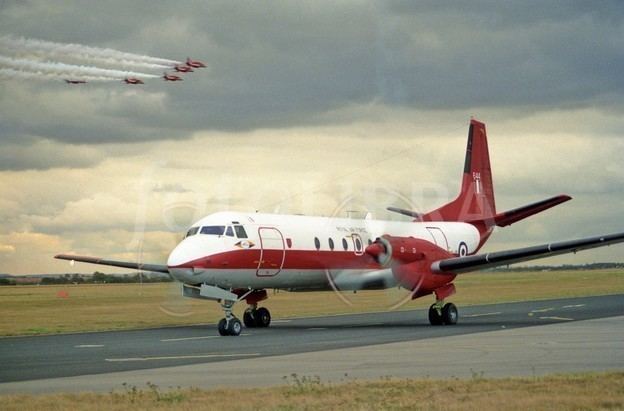
The first production Andover C.1 flew from Woodford on 9 July 1965 and the first four aircraft were used for trials and tests with both Hawker Siddeley and the Aeroplane and Armament Experimental Establishment at Boscombe Down. Following a release to service in May 1966 the fifth production aircraft was delivered to No. 46 Squadron RAF at RAF Abingdon in June 1966. Subsequent RAF types are the Andover CC.2 VIP transport and Andover E.3 electronic calibration aircraft.
Operational history
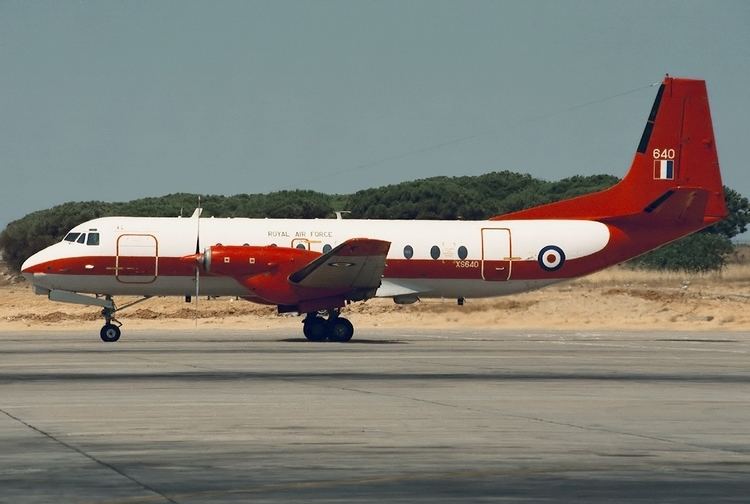
The Andover C.1 was flown for the first time on 9 July 1965. The first four examples were flown to RAF Boscombe Down for acceptance trials that year. The full contract of 31 aircraft were delivered and deployed to squadrons in Transport Command. These were No. 46 Squadron RAF at RAF Abingdon and later RAF Thorney Island, No. 52 Squadron RAF at RAF Seletar (Far East) and No. 84 Squadron RAF at RAF Sharjah (Middle East).
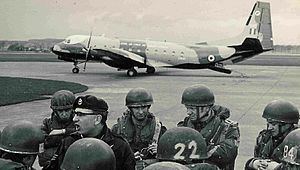
There was a follow-on order placed with Hawker Siddeley for six aircraft that were designated CC.2, being a version of the standard HS 748, and these went initially to 21 Squadron at RAF Khormaksar. The squadron had these for six months before being disbanded when the aircraft went to 32 Squadron at RAF Northolt, designated the Metropolitan Communications Squadron. The aircraft were with 32 Squadron for over 18 years including some time spent on detachment at RAF Bruggen (Germany).
Three of the RAF Andovers continued to fly into the second decade of the 21st century; one C.1 with the Empire Test Pilots' School and one C.1 with the Heavy Aircraft Test Squadron of the Joint Test and Evaluation Group. The remaining aircraft was a modified C.1 converted for photo-reconnaissance, the Andover C.1(PR), serial number XS596; the UK-designated aircraft under the Treaty on Open Skies. All three were based at RAF Boscombe Down.
The Royal New Zealand Air Force operated ten aircraft from 1976, acquired from the RAF while still relatively new. These saw service with UN missions to Somalia and on the Iran-Iraq border, and in disaster-relief work in the Pacific. The type was retired from service in 1998. The main difficulty with their service in New Zealand was their limited range – 1,000 nautical miles (1,900 km) of Pacific Ocean separate New Zealand from its nearest neighbours. New Zealand's Andovers were purchased to replace the Bristol Freighter which had even shorter range.
Variants
Military operators
Civil operators
Both former RAF and RNZAF aircraft were later sold to civil operators, mainly in Africa. As of July 2010 a total of six ex-military Andovers remained in commercial service, operated by:
As of July 2013 only one Andover remained in commercial service, operated by Kenyan company Wilken Aviation. Said aircraft was damaged beyond repair in a non fatal accident at Malakal Airport in South Sudan on 10 November 2015, leaving no aircraft of the type in commercial service.
Aircraft on display
As well as the small number of Andovers which are still flying, the following aircraft are on public display:
New Zealand
United Kingdom
Specifications (Andover C.1)
Data from Jane's All The World's Aircraft 1966–67.
General characteristics
Performance
